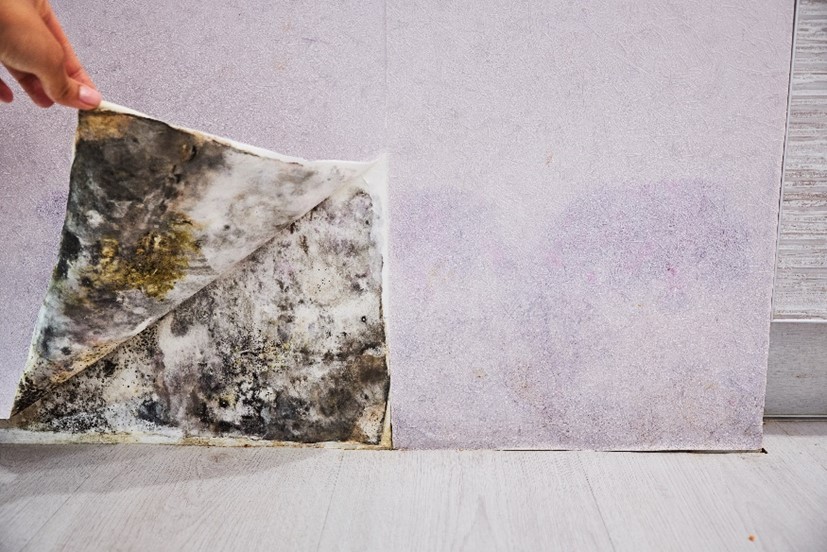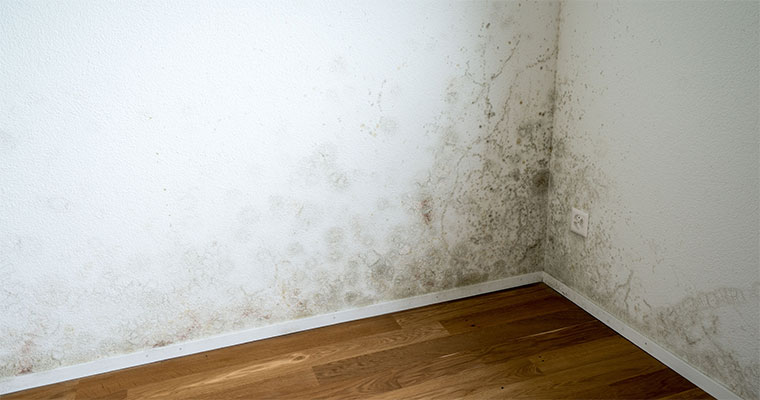A short description in easy to understand laymen terms
Mould is that fury stuff found in damp environments. It is a fungi and can appear in bathrooms, laundrys, kitchens, ceilings, behind furniture, storage areas, stagnated areas of no or little air movement, curtains and wardrobes. It comes in many guises and shapes. There can small deposits barely visible or in extreme cases whole walls and ceilings can be covered. In any case, any mould is bad mould and action needs to be taken. It is not seasonal and can flourish inside the home all year round although winter is more prevalent as the home is closed up most of the time preventing natural airflow from reducing the moisture content.
The consequence of mould in the home is not a healthy one. [1]
Mould spores can be detrimental to our health causing allergic reactions and respiratory problems. Mould has a high risk of causing asthma especially in infants and children.1. Some moulds produce mycotoxins which have been related to neurological problems, the toxin attacks and kills brain cells. Other symptoms caused by mould allergies are: headaches or migraines, cough, watery itchy eyes, nasal discharge and blockage, frequent sneezing, sinus issues, tiredness, rashes and breathing difficulties. All moulds should be treated seriously, the most common ones found in the home are Cladosporium, Alternaria, Aspergillus and Stachybotrys Chartarum or commonly known as black mould.
Any signs of mould needs to be removed.
Mould is a consequence of moisture and lives on porous surfaces, practically every surface in the home is porous and is potentially a home for mould. Removing mould is a 3 step process.
- Kill the existing mould.
- Clean the dead mould from the house.
- Prevent the mould from returning.
There are several ways to kill mould, the most common method is spraying a diluted bleach product which can be bought at most supermarkets and hardware stores. This is quite harsh on surfaces and products and itself can be the cause to asthma and respiratory flare ups. A natural and more friendly approach is using a diluted mixture of clove oil and water in a spray bottle. We have a very good instruction guide on mixing, application and cleaning however it is too long to publish here. If you would like a copy then simply send us an email asking for the ‘Mould treatment guide’ and we will happily send you a copy. info@bdvair.co.nz
Killing and removing the mould is one step however the mould will come back if you do not treat the cause.
Why does mould form in the home
Mould spores are floating around inside and outside all the time looking for wet or damp environments. Excessive moisture inside the home is a breeding ground for mould. This dampness settles on a surface and a passing spore attaches to this dampness and starts to grow. It spreads like a rash and before long has a stranglehold inside the house. This then releases more spores into the air looking for new places to take a hold of. It is these airborne spores which we breathe in and are the cause of some health issues. Unless dealt with mould will eventually take over all areas in the home. Mould is like an iceberg, what you see on top is generally the tip. It has roots like a tree, underneath there is a labyrinth of arms tracking along in the structure and that can be in gib board, panel board, timber, wall paper and paint.

How can we prevent mould from inhabiting our home?
Mould is reliant on wet or damp areas so it can survive. The microscopic spores are constantly hunting for new wet or damp areas so the most obvious place to start is to reduce the availability of wet and damp areas in the home. How do we do that, we need to follow the simple guidelines, that is to follow simple steps to reduce the moisture in the home and have a constant replenishment of fresh drier air throughout the entire home. This can be achieved through regularly opening doors and windows or with a specialist ventilation system such as BDVAir.
Most of us have heard these Simple Steps before however it is always good to have a reminder:
- Install effective bathroom, kitchen and service room air extraction systems to remove moisture and steam and vented to the outside. Keep the outside vents away from windows.
- Don’t dry clothes indoors if it can be avoided. Wet clothes will transfer this moisture into the home and eventually settle on all the contents. Vent driers to the outside.
- Avoid overwatering indoor plants. This water will evaporate into the air.
- Avoid unflued gas heaters, the by product of gas is water and some unhealthy gasses.
- Open windows when suitable to do so, the best method is to open windows at each end of the house to cause a ‘crossflow’ effect, especially good on a sunny day with some wind.
- If you have ceiling fans, operate these to increase air circulation.
- If you have a wooden floor with dirt substrate then seriously consider a ground vapor barrier more can be found about this here.
- Regularly check roofing material for damage and leaks, concrete tile roofs need to be checked for cracks, and the degeneration of the protective seal.
- Ensure your home is adequately and properly insulated to keep the home warmer, this does not make your home drier but will help to prevent moisture from settling on surfaces, ventilation will then flush the moisture out.
- Most effective way to keep your home drier and warmer is with a good ventilation system such as BDVair’s BDV EC home ventilation system. Independent tests from Massey University have shown that home ventilation systems do in fact reduce moisture, carbon dioxide and fungal spores making it healthier and drier.
These are just a couple of steps which will help, there are many more. The team at BDVAir are more than happy to discuss these with you and conduct a free assessment and non invasive moisture test.
Also read our article on ‘Is your home properly ventilated and how do you know’
More Information:

